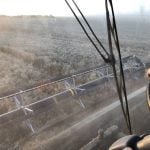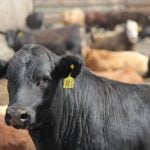GUELPH, Ont. — The growth of the politically potent rural land rights movement in Ontario is a symptom of one of the deepest rural-urban divides in Canada, a researcher says.
University of Guelph professor Glenn Fox told a rural land use policy conference May 14 that the growth of the Ontario Landowners’ Association during the past several decades reflects a profound disconnect between policy-makers, urban residents and hundreds of thousands of rural landowners.
“There is a very deep cultural divide,” he said.
“I don’t know what it will take to repair it, and I think it is a very interesting question why this rural land rights movement seems so Ontario-centric. I’m sure a divide exists in other provinces but it really is more pronounced in Ontario.”
Read Also

Trump’s tariffs take their toll on U.S. producers
U.S. farmers say Trump’s tariffs have been devastating for growers in that country.
Two Progressive Conservative members of the Ontario legislature are former eastern Ontario activists from the landowners’ association, whose signs dot the rural countryside: a stop sign, the slogan “Back off Government” and the warning, “without property rights you have no rights.”
“I would say people in this movement do not necessarily oppose the social or environmental goals of government regulations,” said Fox.
“They just don’t want rural landowners to bear a disproportionate part of the cost.”
It is a familiar tale across Canada, whether it is a farmer lobby to receive compensation for environmental and landscape stewardship services they provide or the battle for compensation for fuel pipelines and power lines that cross properties.
However, the battle is more intense and politically charged in Ontario.
Fox suggested it is because the province is the most urban in the country and home to millions of urban residents with no rural connections.
“They live in their small condos in the city and consider rural areas their playground for the weekend.”
He said the rural resentment began to grow in the 1960s and 1970s when rules were passed to preserve the Niagara Escarpment. They escalated in the 1990s with the creation of greenbelts around cities that arbitrarily limited the rights of landowners without compensation.
The proliferation of rural wind turbines has increased the divisions in the past decade.
“Although I think the tinderbox was filled in the 1970s, the tipping point came in the 1990s when the number of rules and regulations increased dramatically,” said Fox.
“The Ontario farmers I know have a strong land and environmental ethic, but they also have a strong view of the rights of land ownership.”
He said most urban residents are oblivious to the divide.
“In most cases, I don’t believe they know this is going on.”
However, it has significant political implications.
The province’s Liberal government lost its majority in the 2011 provincial election because it lost most of its rural seats.
Premier Kathleen Wynne has recognized the divide and appointed herself, a Toronto MPP with no rural experience, as agriculture minister.
“The premier is trying to mend fences,” Fox said. “But there is a very large divide. Good luck trying to bridge it. There is unrest in rural Ontario. Not civil unrest — it is very civil — but it is real.”














